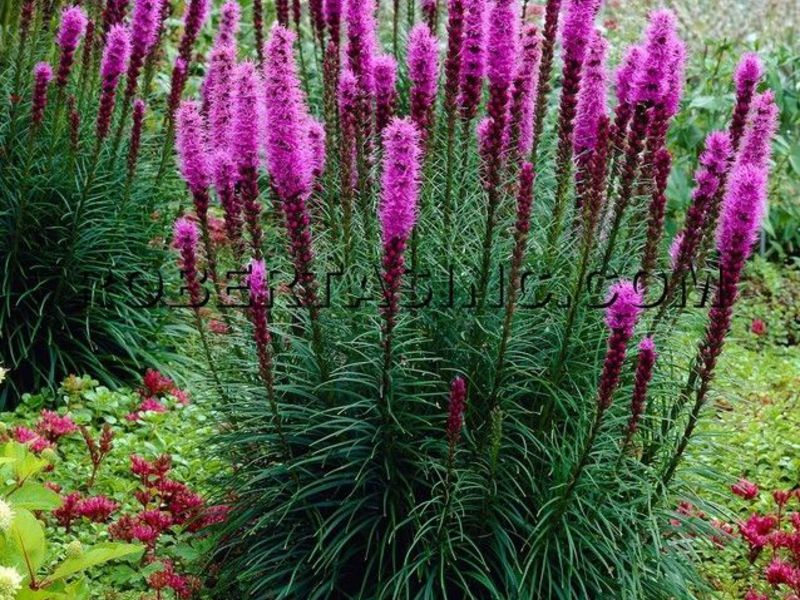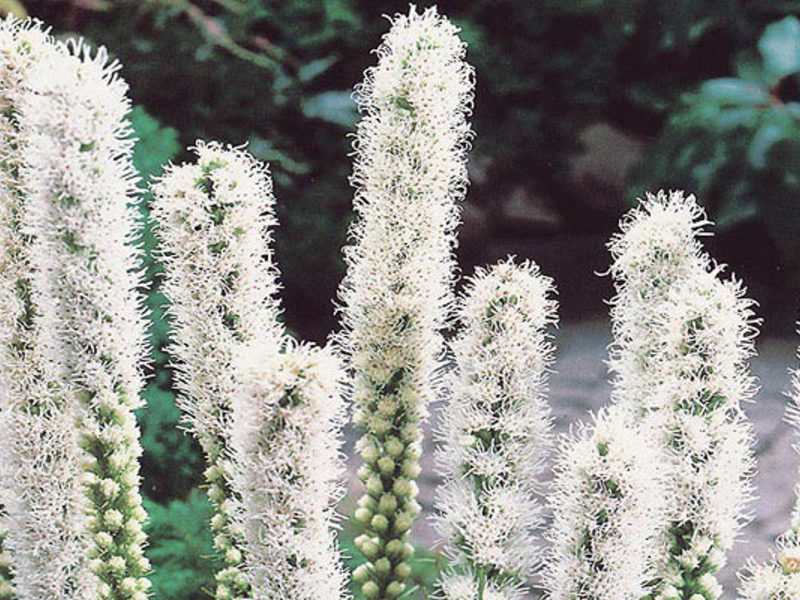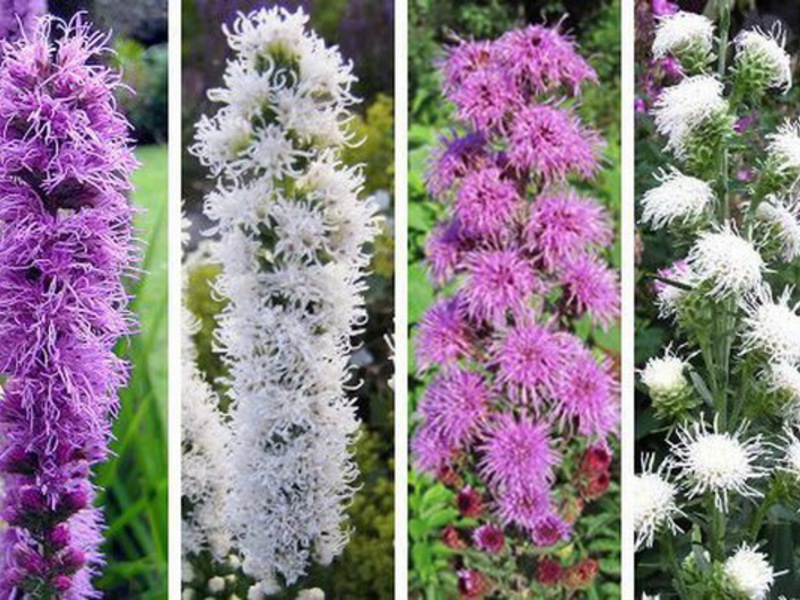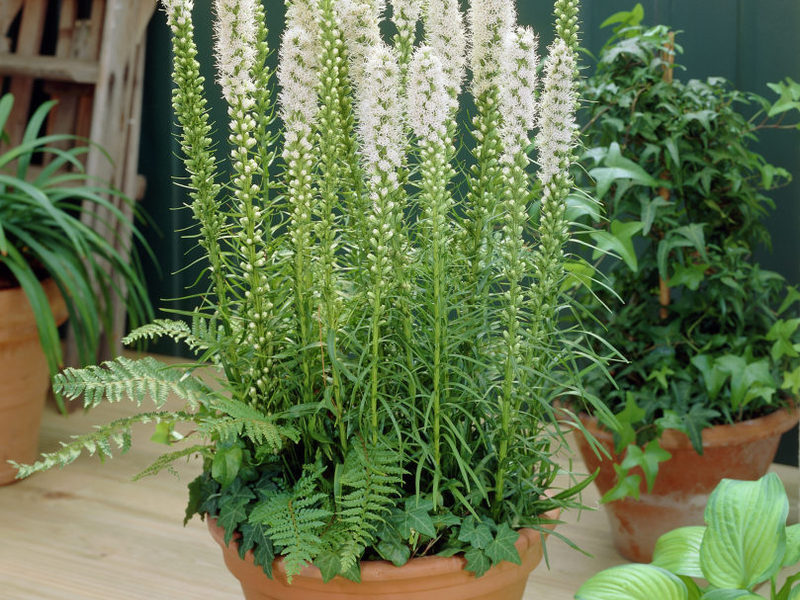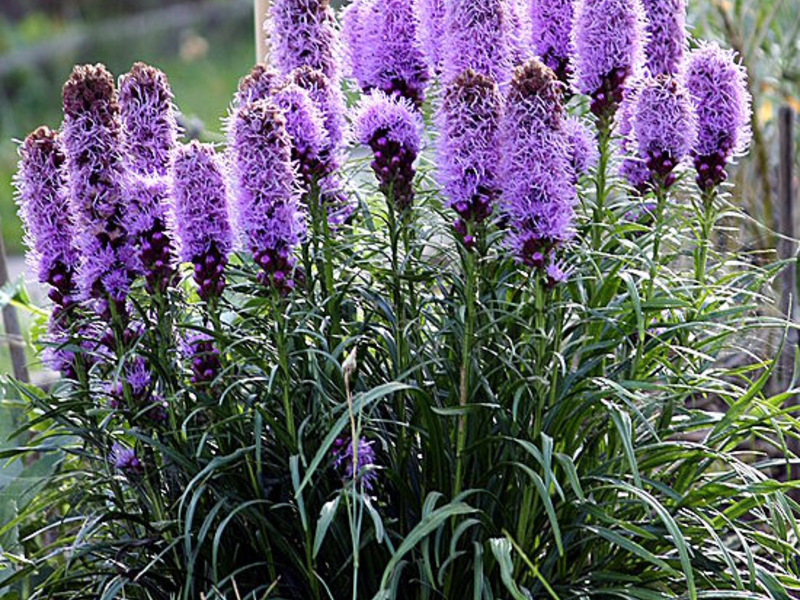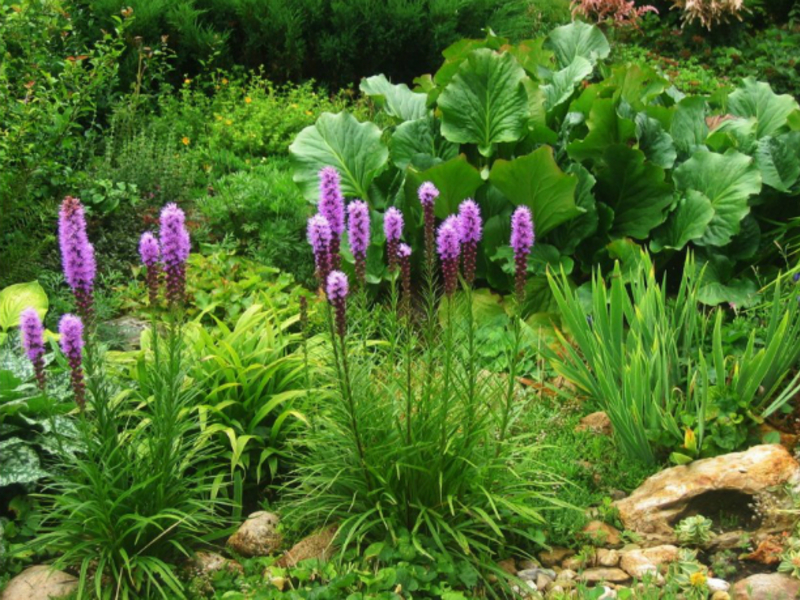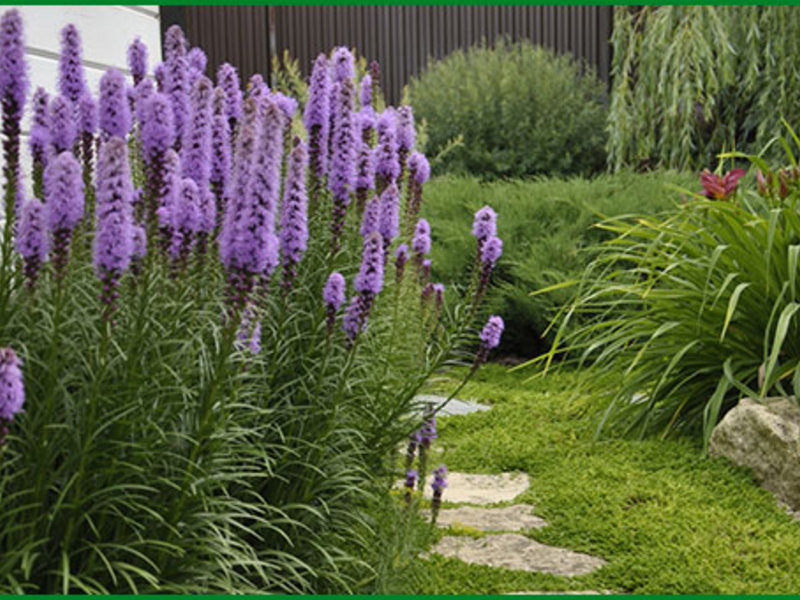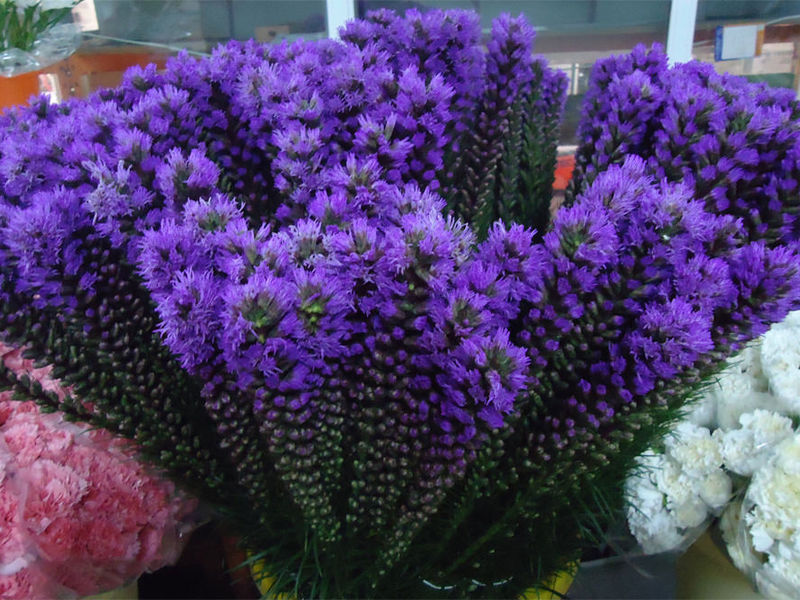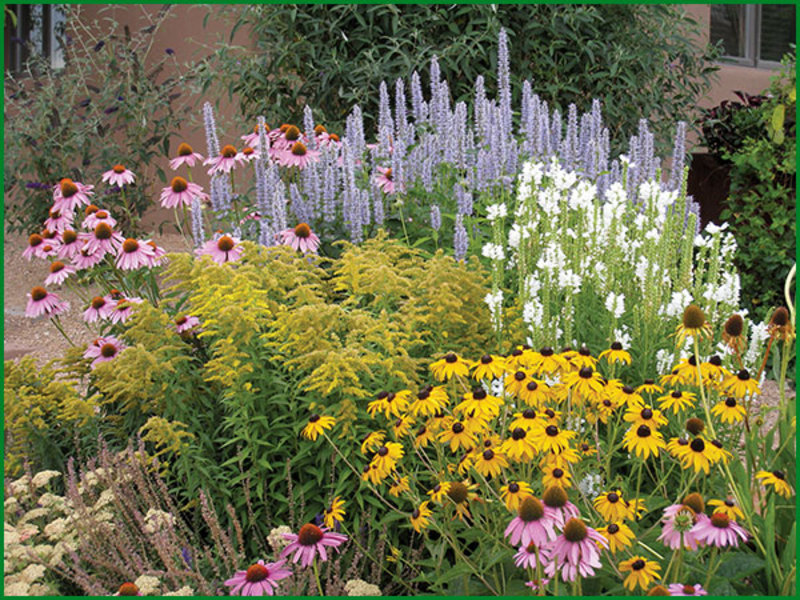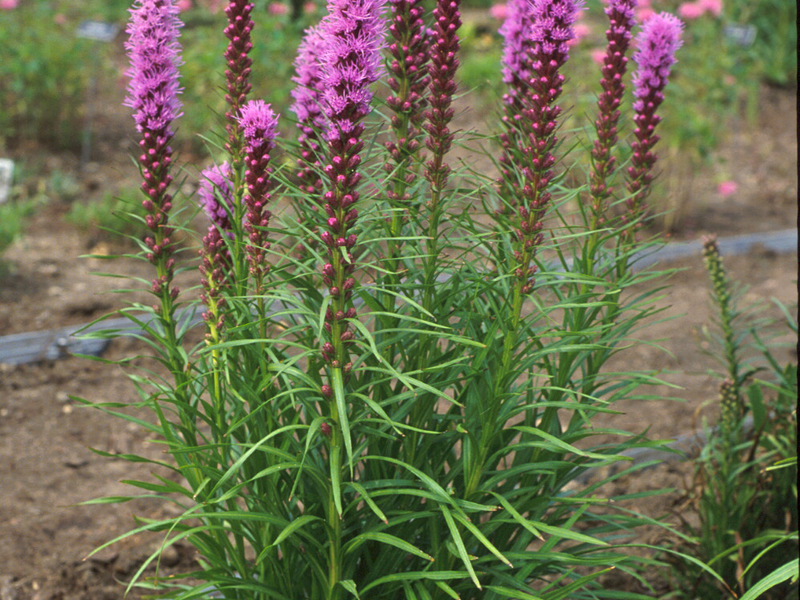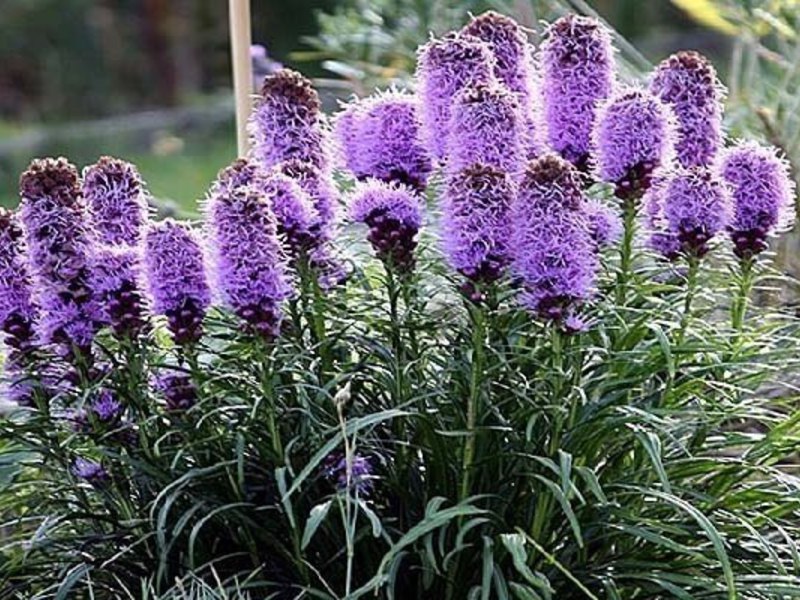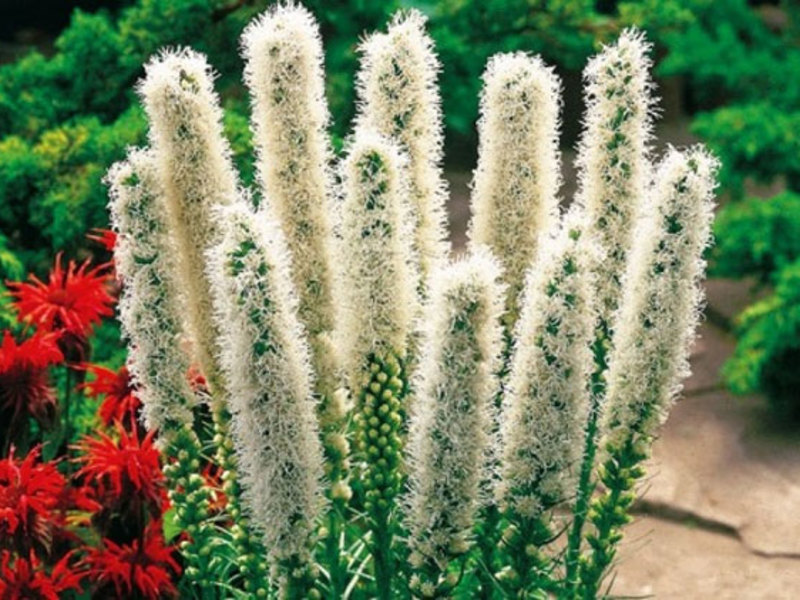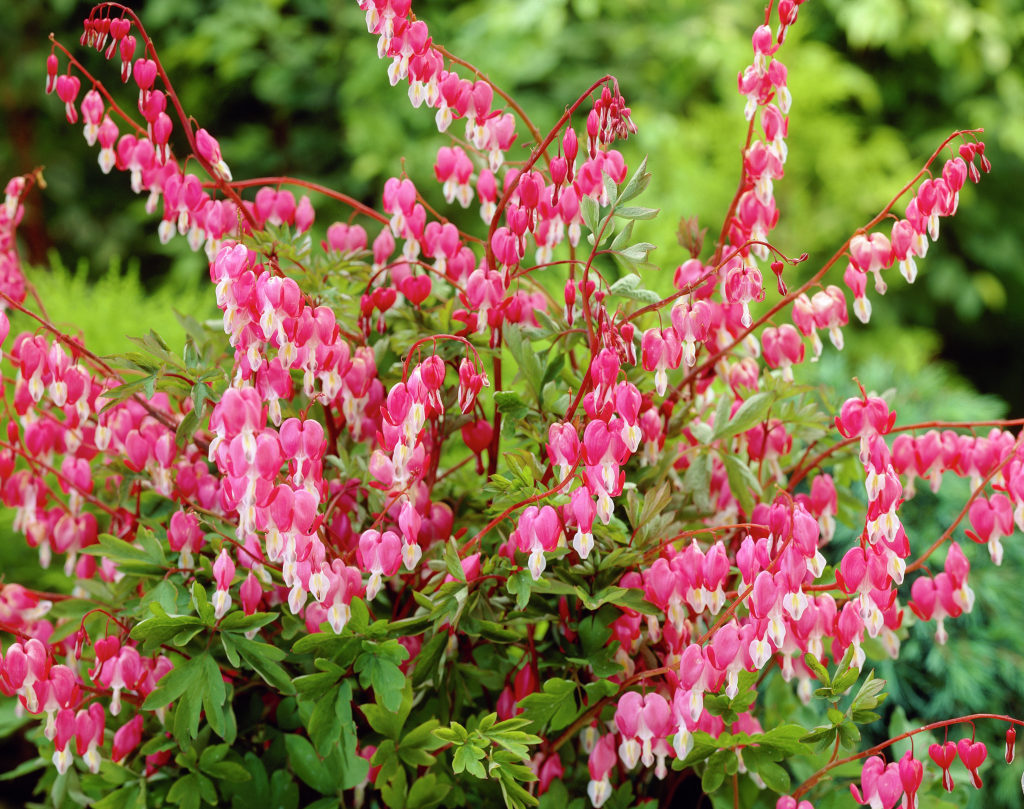In many garden plots, you can find such an amazing plant as liatris, which looks very beautiful both in the photo and in person. This decorative flower has a pleasant aroma and unusual flowering, moreover, it is not capricious. Planting the lyatrix on time will allow you to enjoy the original flowers from early July to late August.
This perennial has a large number of different varieties, planting seeds of which and caring for the sprouts does not require much effort. Thanks to this, this culture is considered quite popular. Let's try to figure out what a liatris is, planting and care in the open field of which will also be considered.
Variety of varieties
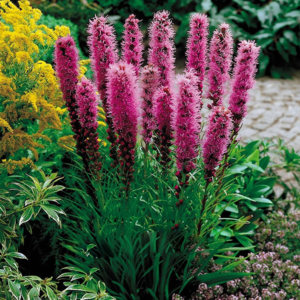 The birthplace of Liatris flowers is North America, so it takes root well in our country. It is a perennial plant erect erect stem, which is decorated with numerous inflorescences, and in height it can reach 2 meters. Many gardeners plant the plant in groups, which looks very beautiful. It is also planted in separate flower beds and is often used for bouquets. To keep it in the vase longer, dilute the water with a small amount of fertilizer.
The birthplace of Liatris flowers is North America, so it takes root well in our country. It is a perennial plant erect erect stem, which is decorated with numerous inflorescences, and in height it can reach 2 meters. Many gardeners plant the plant in groups, which looks very beautiful. It is also planted in separate flower beds and is often used for bouquets. To keep it in the vase longer, dilute the water with a small amount of fertilizer.
This plant is represented by varieties, the number of which is more than forty. The most common types are:
- spicate;
- filmy;
- rough.
Spikelet is the most common type of liatris, the height of adult inflorescences in which is 80 cm... It begins to bloom in late June and continues until mid-July. The shades of this species are quite diverse. Liatris spikelet blue (bluish color) goes well with white, purple lilac, pink and purple flowers.
Filmy. A distinctive feature of this species is the leaves, which can reach a width of 3 cm. Some varieties can reach a height of one meter. The most popular variety of this species is "Alba", which has white fluffy inflorescences. It is very easy to care for it, just like planting and growing.
Rough - this variety is tall, the stems of some varieties can reach a height of 2 meters. The upper part of the stem is covered with small purple flowers, which are collected in lush inflorescences.
Methods for growing Liatris at their summer cottage
This culture can multiply:
- seeds;
- tubers;
- dividing the bush.
Planting a plant is carried out in different ways and it depends on which method is chosen.
Growing liatris from seeds in the open field
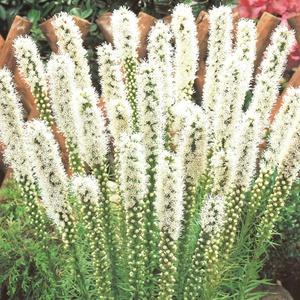 This method is considered the simplest, and adult flowers can be obtained in the second year. Since seedlings are not afraid of frosts, many gardeners sow them in the ground in late autumn... Still, it's better to do it in the spring. A place for growing a crop is prepared in advance by digging it up and applying fertilizer (1 bucket of humus per 1 m2).
This method is considered the simplest, and adult flowers can be obtained in the second year. Since seedlings are not afraid of frosts, many gardeners sow them in the ground in late autumn... Still, it's better to do it in the spring. A place for growing a crop is prepared in advance by digging it up and applying fertilizer (1 bucket of humus per 1 m2).
The seeds need extra care. Before planting, they should be soaked for 8-10 hours in plain water or in a growth stimulator. Seeds are planted in holes with a depth of 1 to 1.5 cm. As soon as they are planted, the beds are evenly covered with soil.
Reproduction of Liatris tubers
This method is ideal for those who have an adult plant on their site, for which they provide the necessary care. Tubers as planting material are best taken from flowers that are more than three years old. When placing them in the ground, find a small depression on the tubersfrom which shoots will germinate. They are planted in pre-prepared pits with a depth of 10 cm, a third of which must be filled with humus. If everything is done correctly, then the first shoots can be expected in about a month.
Dividing the bush
In this case, young shoots of an adult plant, together with roots, are used as planting material. Divide the bush in such a way that the young shoot has a powerful part of the mother plant and it can root well.
For planting such shoots, holes are prepared with a depth of 10 - 20 cm, located at a distance of 30 cm from each other. The well, as in the previous case, is filled with humus by 1/3, after which this culture is planted. After all the shoots are planted, the beds should be mulched using humus. Later on Liatrice transplanted in early spring or at the end of autumn. Reproduction in this way must be carried out every 3 to 4 years.
Care
If this flower is planted in open ground, then caring for it is as follows:
- regular watering;
- weed removal;
- hilling a bush.
Since the root system of Liatris is superficial and can be exposed during rains, it should be regularly added to the soil on the site. Tall peduncles sometimes need to be tied to a support. It is also advisable to mulch the site, in this case the roots will be protected and receive additional nutrition.
Liatris needs to be fertilized regularly. Doing so recommended 12 times a week and it is best to combine this with watering, which at the beginning of the growing season contributes to the formation of a powerful root system. But do not moisten the plant too much, as in this case the roots can rot.
It is necessary to feed liatris in the spring with fertilizers that are purchased in a specialized store. An excessive amount of feeding can lead to the fact that thorns will fall off the flower. Also, caring for the plant consists in weeding and removing dried inflorescences so that the flower does not lose its decorative effect even after its flowering and pleases the eye with its bright green foliage for a long time.
Diseases and pests
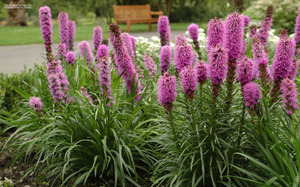 Liatris is unpretentious and resistant to various diseases, but they can greatly harm him snails and bears... To get rid of them, you need to use the following folk method: a 100 ml bottle of beer is dug into the ground at an angle of 45 degrees so that the neck is 2 - 3 cm below the surface level. Snails and bears will crawl to the smell of beer, as a result in a trap. It is only necessary to regularly change the beer in the baits.
Liatris is unpretentious and resistant to various diseases, but they can greatly harm him snails and bears... To get rid of them, you need to use the following folk method: a 100 ml bottle of beer is dug into the ground at an angle of 45 degrees so that the neck is 2 - 3 cm below the surface level. Snails and bears will crawl to the smell of beer, as a result in a trap. It is only necessary to regularly change the beer in the baits.
Sometimes the plant begins to rot from waterlogging. In this case, all the rot is cut off on the flower, after which it is treated with a fungicide.
Thus, we have sorted out what liatris is, its features, a photo of this flower was presented in the article. This exotic plant takes root well in Russian household plots, as it resistant to various adverse conditions... The process of growing from seeds is quite simple and even a novice gardener can handle it.
